Background
The Six Viewpoints was originally developed in the 1970s by master theater artist and educator Mary Overlie, later conceptualised in her book Standing in Space: The Six Viewpoints Theory & Practice (2016). Overlie's Viewpoints and practice are seen to contribute greatly to the postmodern movement in theatre, dance, and choreography, grounded in its opposition against modernism's emphasis on hierarchical structure in performance creation, fixed meaning, and linear narratives. [3]
A key principle of the Viewpoints practice is horizontalism, [4] a distinct focus on a non-hierarchical organisation of the performance elements, meaning shared engagement with elements like space, body, text, time, shape, and emotion. The practice subsequently constitutes a shared agency of creation amongst performers and creators in working through the individual body and its surrounding material environment as part of a collective ensemble. The Viewpoints thus encourages the performer to incorporate their own bodily impulses and personal experiences in the act of creation. [5]
The Six Viewpoints theory was adapted by directors Anne Bogart and Tina Landau, ultimately resulting in the delineation of nine "physical" and five "vocal" Viewpoints. Bogart and Overlie were on the faculty of the Experimental Theatre Wing at NYU Tisch School of the Arts in the late 1970s and early 1980s, during which Bogart was influenced by Overlie's innovations. Overlie's Six Viewpoints are considered to be a methodology to examine, analyze, and create performance in non-hierarchised and deconstructed way, whilst Bogart's Viewpoints are considered practical in creating staging with actors.
Overlie's Viewpoints
Introduction and Overview
The Six Viewpoints is a philosophical and practical approach to articulate a post-modern perspective on performance. The practice involves deconstructing the physical stage and physical performance into its six Materials of composition: Space, Shape, Time, Emotion, Movement and Story. These six elements have existed historically within a rigid hierarchy which gives prevalence to story and emotion in theatre, and shape and movement in dance. The Six Viewpoints releases the Materials from this fixed construct into a fluid non-hierarchical environment for re-examination. The act of deconstructing performance into its Six Materials invites the performer, director, and artist to engage with the individual materials "allowing these elements to take the lead in a creative dialogue". [6]
For Overlie, this shift in attention re-defines art and the role of the artist from a "creator/originator" mindset to what she called the "observer/participant," which centers on "witnessing, and interacting, ... working under the supposition that structure could be discerned rather than imposed". [7] Overlie observed this redefinition of the artist's endeavor to correspond with the artistic shift from modernism to post-modernism.
The theory and practice of the Six Viewpoints are organized in two parts: The Materials and The Bridge.
The Materials (SSTEMS)
When working with the materials, the artist is instructed to turn off the impulse to control or own the material, and is challenged to work very specifically with each material as an independent entity. Overlie recommends the artist to gather as much "useless" data as they can and to take time to explore. [6]
The seed of the entire work of The Six Viewpoints is found in the simple act of standing in space. From this perspective the artist is invited to read and be educated by the lexicon of daily experience. The information of space, the experience of time, the familiarity of shapes, the qualities and rules of kinetics in movement, the ways of logic, how stories are formed, the states of being and emotional exchanges that constitute the process of communication between living creatures ... Working directly with these materials the artist begins to learn of performance through the essential languages as an independent intelligence (Overlie). [8]
The Six Materials of composition, referred to with the acronym SSTEMS, are:
- S (Space)
- Space contains blocking, placement of furniture, placement of the walls, doors and windows, angle of gaze, distance of projection, and spatial alignment of the actors to the proscenium, to the audience and to each other.
- S (Shape)
- Shape contains geometry, costumes, gestures, and the shape of the actors' bodies and of all the objects onstage.
- T (Time)
- Time contains duration, rhythm, punctuation, pattern, impulse, repetition, legato, pizzicato, lyrical.
- E (Emotion)
- Emotion contains presence, anger, laughter, pensiveness, empathy, alienation, romance, pity, fear, anticipation, etc.
- M (Movement)
- Movement contains falling, walking, running, breath, suspension, contraction, impact.
- S (Story)
- Story contains logic, order and progression of information, memory, projection, conclusion, allusions, truth, lies, associations, influences, power, weakness, reification, un-reification, constructions and deconstruction. [9]
The Bridge
The Bridge is a sequence of nine laboratories that function as philosophical and pedagogical frameworks in which to engage with the Materials. The Bridge presents the origins of the Viewpoints' approach to art and introduces into practice the philosophical concepts that are used to disintegrate and then reintegrate performance. [10]
The nine laboratories of The Bridge are:
- News of a Difference: Noticing Difference in Increasing Levels of Subtlety
- Deconstruction: Investigating Theater by Separating the Components of its Structure
- The Horizontal: Non-hierarchical Composition
- Post-modernism: The Philosophical Foundation
- Reification: A Reflection on Creativity, Communication, and Language
- The Piano: The Interface between Artist and Audience
- The Matrix: The Ingredients are in the Cauldron
- Doing the Unnecessary: The SSTEMS Dissolve
- The Original Anarchist: A New and a Very Old Idea [11]
As a practice at large, The Six Viewpoints "is dedicated to reading the stage as a force of Nature". [1]
Bogart's and Landau's Viewpoints
In their book, The Viewpoints Book: A Practical Guide to Viewpoints and Composition (2005), Anne Bogart and Tina Landau identify the primary Viewpoints as those relating to Time - which are Tempo, Duration, Kinesthetic Response, and Repetition - and those relating to Space - which are Shape, Gesture, Architecture, Spatial Relationship and Topography. In addition, Bogart and Landau have added the Vocal Viewpoints which include Pitch, Volume, and Timbre. [2]
In the book, the authors outline the basics of the Viewpoints training they both espouse, as well as specific methods for applying their expanded practice to both rehearsals and production. For Bogart and Landau, the Viewpoints represent not only a physical technique but also a philosophical, spiritual, and aesthetic approach to many aspects of their work. Bogart references her work with the SITI company, and Landau with the Steppenwolf Theater Company.
Bogart's Viewpoints, a re-conceptualisation of Overlie's Viewpoints, are:
- Architecture: The physical environment, the space, and whatever belongs to it or constitutes it, including permanent and non-permanent features.
- Spatial Relationship: Distance between objects on stage; one body in relation to another, to a group, or to the architecture.
- Topography: The movement over landscape, floor pattern, design and colours.
- Shape : The contour or outline of bodies in space; the shape of the body by itself, in relation to other bodies, or in relation to architecture; lines, curves, angles, arches all stationary or in motion.
- Gesture : a) Behavioral gesture: realistic gesture belonging to the physical world as we observe it every day. b) Expressive gesture: abstract or symbolic gesture expressing an inner state or emotion; it is not intended as a public or "realistic" gesture.
- Tempo : How quickly or slowly something happens on stage.
- Duration: How long an event occurs over time; how long a person or a group maintains a particular movement, tempo, gesture, etc. before it changes.
- Kinesthetic Response: A spontaneous reaction to a motion that occurs outside of oneself. An instinctive response to an external stimulus (realistic/non-realistic).
- Repetition: a) Internal Repetition: repeating a movement done with one's own body, and b) External Repetition: repeating a movement occurring outside one's body. [12]
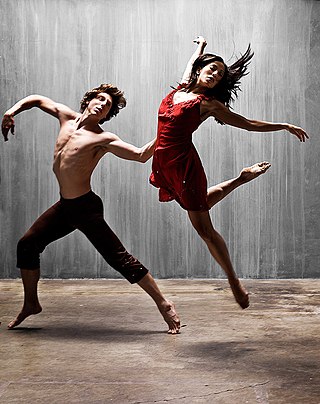
Dance is an art form, often classified as a sport, consisting of sequences of body movements with aesthetic and often symbolic value, either improvised or purposefully selected. Dance can be categorized and described by its choreography, by its repertoire of movements or by its historical period or place of origin. Dance is typically performed with musical accompaniment, and sometimes with the dancer simultaneously using a musical instrument themselves.
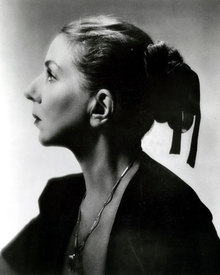
Hanya Holm is known as one of the "Big Four" founders of American modern dance. She was a dancer, choreographer, and above all, a dance educator.

Mary Wigman was a German dancer and choreographer, notable as the pioneer of expressionist dance, dance therapy, and movement training without pointe shoes. She is considered one of the most important figures in the history of modern dance. She became one of the most iconic figures of Weimar German culture and her work was hailed for bringing the deepest of existential experiences to the stage.

Sanford "Sandy" Meisner was an American actor and acting teacher who developed an approach to acting instruction that is now known as the Meisner technique. While Meisner was exposed to method acting at the Group Theatre, his approach differed markedly in that he completely abandoned the use of affective memory, a distinct characteristic of method acting. Meisner maintained an emphasis on "the reality of doing", which was the foundation of his approach.

Experimental theatre, inspired largely by Wagner's concept of Gesamtkunstwerk, began in Western theatre in the late 19th century with Alfred Jarry and his Ubu plays as a rejection of both the age in particular and, in general, the dominant ways of writing and producing plays. The term has shifted over time as the mainstream theatre world has adopted many forms that were once considered radical.

Physical theatre is a genre of theatrical performance that encompasses storytelling primarily through physical movement. Although several performance theatre disciplines are often described as "physical theatre", the genre's characteristic aspect is a reliance on the performers' physical motion rather than, or combined with, text to convey storytelling. Performers can communicate through various body gestures.
The Theatre of Cruelty is a form of theatre conceptualised by Antonin Artaud. Artaud, who was briefly a member of the surrealist movement, outlined his theories in a series of essays and letters, which were collected as The Theatre and Its Double. The Theatre of Cruelty can be seen as a break from traditional Western theatre and a means by which artists assault the senses of the audience. Artaud's works have been highly influential on artists including Jean Genet, Jerzy Grotowski, Peter Brook, and Romeo Castellucci.
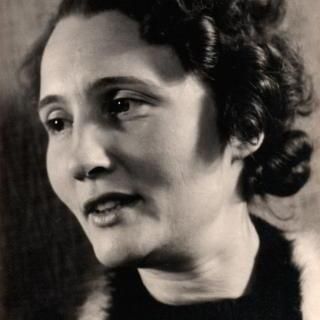
Gerda Alexander was a German/Danish Dalcroze eurhythmicist and teacher, and later creator of Eutony. She was involved with the vanguards of the arts, education, and movement culture in Germany in the first decades of the 20th century, and established herself in Denmark in 1929 onwards. Through the creation of Eutony, Gerda Alexander collaborated with medical centers, pedagogical and artistic training institutes in Europe, North and South America and the Middle East.
The Meisner technique is an approach to acting developed by American theatre practitioner Sanford Meisner.

Émile Jaques-Dalcroze was a Swiss composer, musician, and music educator who developed Dalcroze eurhythmics, an approach to learning and experiencing music through movement. Dalcroze eurhythmics influenced Carl Orff's pedagogy, used in music education throughout the United States.

Adolphe Appia was a Swiss architect and theorist of stage lighting and décor. He was the son of Red Cross co-founder Louis Appia.
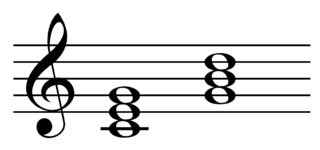
In music, gesture is any movement, either physical (bodily) or mental (imaginary). As such "gesture" includes both categories of movements required to produce sound and categories of perceptual moves associated with those gestures. The concept of musical gestures has received much attention in various musicological disciplines in recent years.

Tina Landau is an American playwright and theatre director. Known for her large-scale, musical, and ensemble-driven work, Landau's productions have appeared on Broadway, Off-Broadway, and regionally, most extensively at the Steppenwolf Theatre Company in Chicago where she is an ensemble member.
Devised theatre – frequently called collective creation – is a method of theatre-making in which the script or performance score originates from collaborative, often improvisatory work by a performing ensemble. The ensemble is typically made up of actors, but other categories of theatre practitioners may also be central to this process of generative collaboration, such as visual artists, composers, and choreographers; indeed, in many instances, the contributions of collaborating artists may transcend professional specialization. This process is similar to that of commedia dell'arte and street theatre. It also shares some common principles with improvisational theatre; however, in devising, improvisation is typically confined to the creation process: by the time a devised piece is presented to the public, it usually has a fixed, or partly fixed form. Historically, devised theatre is also strongly aligned with physical theatre, due at least in part to the fact that training in such physical performance forms as commedia, mime, and clown tends to produce an actor-creator with much to contribute to the creation of original work.
The Governor's School for the Arts is a regional secondary arts school sponsored by the Virginia Department of Education and the public school divisions of Chesapeake, Franklin, Isle of Wight County, Norfolk, Portsmouth, Southampton County, Suffolk, and Virginia Beach. It is one of 19 Virginian academic-year Governor's Schools and provides intensive educational opportunities for identified gifted students in instrumental music, vocal music, dance, musical theatre, theatre & film, and visual arts. The school is housed in the historic Monroe Building in downtown Norfolk.

Modern dance is a broad genre of western concert or theatrical dance which includes dance styles such as ballet, folk, ethnic, religious, and social dancing; and primarily arose out of Europe and the United States in the late 19th and early 20th centuries. It was considered to have been developed as a rejection of, or rebellion against, classical ballet, and also a way to express social concerns like socioeconomic and cultural factors.
En Garde Arts is a New York City-based theatre company, and a pioneer in the field of site-specific theatre.
Ruth Elly Abramovitsch Sorel was a German choreographer, dancer, artistic director and teacher. She spent the first half of her career working mainly in Europe and then was predominantly active in Canada after moving to that nation in 1944. In Canada she worked under the stage name "Ruth Sorel", but in Europe she was known under her maiden name, Abramovitsch.
Dalcroze eurhythmics, also known as the Dalcroze method or simply eurhythmics, is one of several developmental approaches including the Kodály method, Orff Schulwerk and Suzuki Method used to teach music to students. Eurhythmics was developed in the early 20th century by Swiss musician and educator Émile Jaques-Dalcroze. Dalcroze eurhythmics teaches concepts of rhythm, structure, and musical expression using movement, and is the concept for which Dalcroze is best known. It focuses on allowing the student to gain physical awareness and experience of music through training that takes place through all of the senses, particularly kinesthetic.
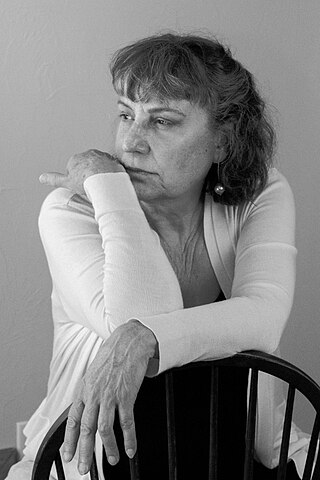
Mary Overlie was an American choreographer, dancer, theater artist, professor, author, and the originator of the Six Viewpoints technique for theater and dance. The Six Viewpoints technique is both a philosophical articulation of postmodern performance and a teaching system addressing directing, choreographing, dancing, acting, improvisation, and performance analysis. The Six Viewpoints has been taught in the core curriculum of the Experimental Theater Wing within Tisch School of the Arts at New York University since its inception (1978).












